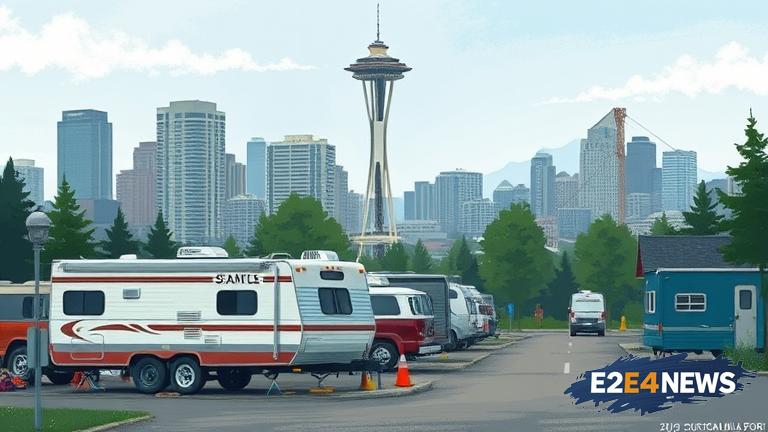Seattle, like many other major cities in the United States, is struggling to address the issue of RV hot spots. These areas, where recreational vehicles are parked and often used as permanent residences, have become a growing concern for residents and authorities. The city has seen a significant increase in the number of RVs parked on its streets, with many of these vehicles being used as homes by people who are struggling to find affordable housing. While some residents have expressed sympathy for those living in the RVs, others have raised concerns about the safety and sanitation of these areas. Many of the RVs are parked in residential neighborhoods, where they can be a nuisance to homeowners who are concerned about the impact on their property values. The city has implemented various measures to address the issue, including the creation of designated RV parking areas and the provision of services such as trash pickup and portable toilets. However, these efforts have been met with criticism from some residents who feel that they do not go far enough to address the problem. The issue of RV hot spots is complex and multifaceted, and it will likely require a comprehensive and coordinated approach to resolve. The city will need to work with local residents, businesses, and social service providers to develop a solution that balances the needs of all parties involved. One of the main challenges facing the city is the lack of affordable housing options, which has driven many people to seek alternative forms of accommodation. The RV hot spots are often seen as a symptom of a larger problem, rather than the problem itself. To address the issue, the city will need to invest in the development of affordable housing, as well as provide support services for those who are struggling to find a place to live. This could include the provision of rental assistance, job training programs, and mental health services. The city will also need to work with local law enforcement to ensure that the RV hot spots are safe and secure, and that those living in the vehicles are not being exploited or harmed. In addition to these efforts, the city could consider implementing policies to restrict the parking of RVs in certain areas, such as residential neighborhoods. This could help to reduce the impact of the RV hot spots on local residents and businesses. However, such policies would need to be carefully considered and implemented in a way that does not unfairly penalize those who are living in the RVs. The issue of RV hot spots is not unique to Seattle, and many other cities are facing similar challenges. By working together and sharing best practices, cities can develop effective solutions to address the issue and ensure that all residents have access to safe and affordable housing. The city’s efforts to address the issue of RV hot spots will be closely watched by residents and authorities, who are eager to see a resolution to the problem. In the meantime, those living in the RVs will continue to face challenges and uncertainties, as they struggle to find a place to call home. The city’s response to the issue will have a significant impact on the lives of these individuals, and it is essential that their needs and concerns are taken into account. As the city moves forward, it will be important to prioritize the development of affordable housing and support services, as well as the implementation of policies to restrict the parking of RVs in certain areas. By taking a comprehensive and coordinated approach, the city can work towards a solution that balances the needs of all parties involved and ensures that all residents have access to safe and affordable housing. The issue of RV hot spots is a complex and multifaceted one, and it will require a sustained and collective effort to resolve. However, by working together and prioritizing the needs of all residents, the city can create a more equitable and sustainable solution to the problem. In conclusion, the issue of RV hot spots in Seattle is a growing concern that requires a comprehensive and coordinated approach to resolve. The city must work with local residents, businesses, and social service providers to develop a solution that balances the needs of all parties involved. This will require a sustained and collective effort, but it is essential to ensuring that all residents have access to safe and affordable housing.





